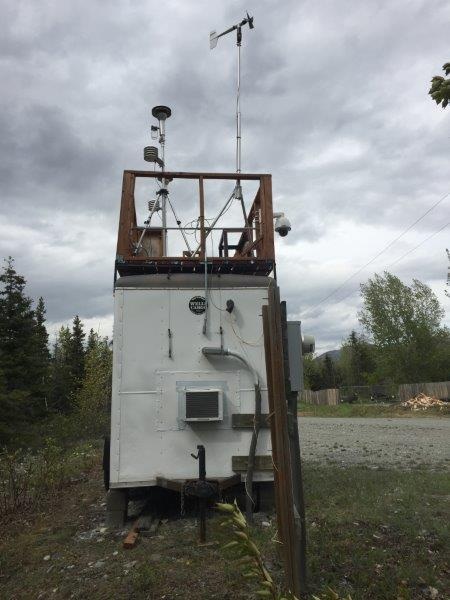Butte Air Quality Monitoring Site
Site Location
Monitoring Siting Criteria for the Butte Air Quality Monitoring Site
Introduction
The Code of Federal Regulation Title 40 Part 58 covers Ambient Air Quality Surveillance. Appendix E to Part 58—Probe and Monitoring Path Siting Criteria for Ambient Air Quality Monitoring contains specific location criteria applicable to State and Local Air Monitoring Stations (SLAMS) ambient air quality monitoring probes and inlets. These siting criteria are necessary to ensure the uniform collection of compatible and comparable air quality data. The probe siting criteria discussed in Appendix E must be followed to the greatest extent possible, although there may be situations where some deviation from the siting criteria may be necessary. Specific siting criteria that are phrased with a "must" are defined as requirements and exceptions must be approved through the waiver provisions. However, siting criteria that are phrased with a “should” are defined as goals to meet for consistency but are not requirements.
The Butte site, which was shut down in December 2023, was located on S. Harrison Court off McKechnie Loop in Butte. Monitoring objectives for the Butte site were to gather data on highest concentrations of PM2.5 and PM10 pollutants expected in an area and impact of significant sources. The site consisted of continuous PM2.5 and PM10 Met One Beta Attenuation Monitors (BAMs), with particle size selective inlets. The Butte was a Special Purpose Monitoring (SPM) Site for PM10 pollutants and a State and Local Air Monitoring Stations (SLAMS) site for PM2.5 pollutants.
Placement and Spacing
The table below has siting criteria as outlined in 40 CFR 58, Appendix E. The criteria were reduced to show only relevant criteria for the site.
Particulate Matter (PM2.5 & PM10)
| Applicable Section | Siting Criteria | Observed |
|---|---|---|
| Horizontal and Vertical Placement | 2-15 meters above ground level for neighborhood or larger spatial scale, 2-7 meters for microscale spatial scale sites and middle spatial scale PM10-PM2.5 sites. 1 meter vertically or horizontally away from any supporting structure, walls, etc., and away from dusty or dirty areas. If located near the side of a building or wall, then locate on the windward side relative to the prevailing wind direction during the season of highest concentration potential. |
Criteria Met. 4.7 meters. |
| Spacing from Minor Sources | For neighborhood or larger spatial scales avoid placing the monitor near local, minor sources. The source plume should not be allowed to inappropriately impact the air quality data collected at a site. Particulate matter sites should not be located in an unpaved area unless there is vegetative ground cover year-round. |
Criteria Met. Gravel cul-de-sac and road. |
| Spacing from Obstructions (a) | To avoid scavenging, the inlet must have unrestricted airflow and be located away from obstacles. The separation distance must be at least twice the height that the obstacle protrudes above the probe inlet. |
Criteria Met. |
| Spacing from Obstructions (b) | The inlet must have unrestricted airflow in an arc of at least 180 degrees. This arc must include the predominant wind direction for the season of greatest pollutant concentration potential. For particle sampling, a minimum of 2 meters of separation from walls, parapets, and structures is required for rooftop site placement. |
Criteria Met. |
| Spacing from Trees | To reduce possible interference the inlet must be at least 10 meters or further from the drip line of trees. |
Criteria Met. Tree line 5.4 meters from sampling inlet. |
| Spacing from Roadways | Spacing from roadways is dependent on the spatial scale and average daily traffic count. See 40 CFR 58 Appendix E Section 6.3(b) and Figure E-1 for specific requirements. |
Criteria Met. >100 meters to S. McKechnie Loop. |








